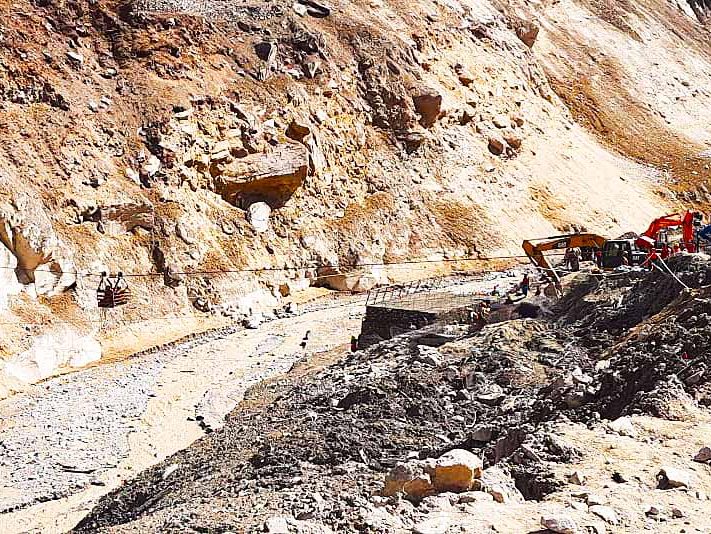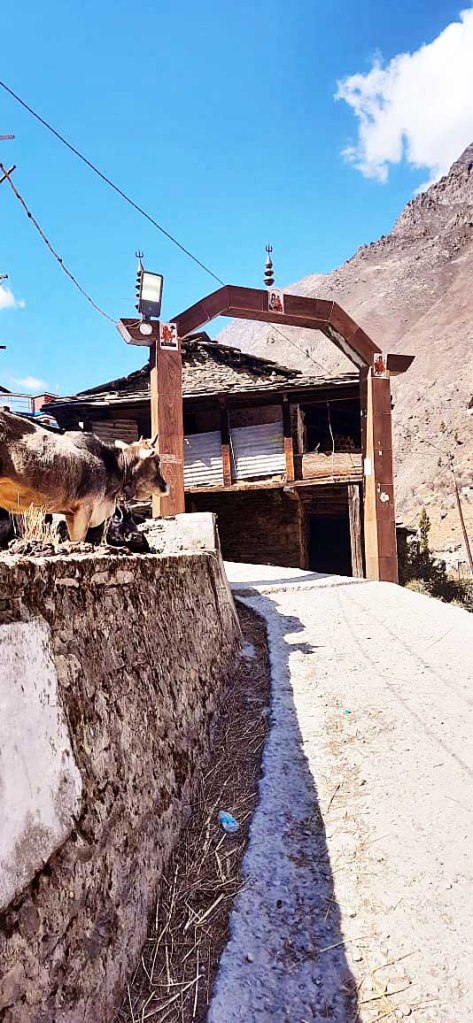 By Vimal Bhai
By Vimal Bhai
When TV channels, newspapers and social media were flooded with news of the disastrous glacier burst in Uttarakhand on February 7, 2021, I was devastated and sad, but I wasn’t surprised.
Having worked with dam-affected people for years and having known the Himalayan region like the back of my hand, I had known that a catastrophe of this magnitude was just waiting to happen.
Countless local residents of Raini village, shepherds, and labourer working on the 13.2MW Rishi Ganga Power Project have been declared dead or missing following a deadly flash flood down the Rishi Ganga in Chamoli district. Now, the Uttarakhand government has decided to declare 136 missing persons as dead, according to news reports.
After destroying Raini village, a quiet little hamlet in the lap of the mountains, a gigantic, gushing column of water reached Dhauliganga. It then destroyed the entire dam of Tapovan Vishnugad’s 520MW power project. In fleeting seconds, the tunnels at the power plant site were clogged and jammed with mud and floodwaters.

In fact, the actual number of people who have been killed will never be made official because the authorities will only give out the number of registered labourers – not the list of casual workers who had been working at the site.
There is no record of how many small contractors were involved in the project and how many labourers were working with them.
Similarly, there is still no comprehensive record of the people who were missing and killed in the 2013 Kedarnath disaster.
It is nature that is being blamed for the whole episode in Uttarakhand. It is being labelled as yet another ‘natural disaster’.
Also Read: When Will We Call Mass Farmer Suicides A Case Of Violence, Too?
News of a glacier breaking and triggering the disaster is being widely publicised, but there is no statement or discussion on the delicate ecology of the Himalayas in the backdrop of large projects, the uncontrolled use of explosives, developmental deforestation, and the complete neglect of environmental laws.
Governments have so far ignored dam reports, warnings from environmentalists, and warnings from nature.
Located in the cusp of the Himalayas, Uttarakhand state is a treasure trove of natural beauty. But at the same time, there is always the risk of natural disasters. And constant tampering with nature makes looming and actual disasters more frightening.
The so-called glacier rupture of February 7, had these two dams not been there, would have led to a bare minimum loss of life and property. The government should realise that it is because of these projects that so many laborers and other workers, as well as many residents of the village and Bakarwal, have been killed.
Also Read: Republic Day Lesson: How Modern India Has Been ‘Recolonised’ By Foreign Companies
The people of Raini village constantly raised the issue of excessive use of explosives for construction of projects. Villagers had even taken the matter to the Uttarakhand High Court, which had given the responsibility to the district magistrate.
We, ‘Matu Jansangthan’, had challenged the environmental clearance of the Tapovan-Vishnugad project in the then “National Environmental Appellate Authority”. It was trashed by the authority on the pretext of the appeal being filed after the deadline.
Even after this, we kept raising the environment-related issues. But the government never paid any attention.
We believe that the local administration, the concerned departments of Uttarakhand state, and the Union environment ministry are responsible for the environmental violations in both the projects.

(Photo: supplied by Matu Jansangathan)
Former Chief Minister of Uttarakhand, late Narayan Dutt Tiwari, had promised after the Tehri Dam project that no such big dam will be built ever again.
Despite that, the public hearing of Pancheshwar and Rupali Gad dam on Mahakali River were in full deception in 2017. The government is now eyeing the Kishau dam on the Tons River. It is clearly an invitation to another direct disaster. The writing is on the wall.
After the 2013 Kedarnath disaster, the Supreme Court, in the case of Alaknanda Hydro Power Company Limited vs. Anuj Joshi and others, took cognizance of the Uttarakhand disaster, and ordered the central and state governments not to green-light any more dam project in Uttarakhand. Also, authorities were told to assess the impact of hydropower projects on the rivers.
The environment ministry limited the order of the Supreme Court to some rivers of the Ganges. The Supreme Court never took cognizance for limiting its order. A committee headed by Ravi Chopra recommended that 23 of 24 projects started should be halted, in the 2012 report of Wildlife Institute of India, Dehradun. The Supreme Court considered all 24 projects were preventable.
After this, the environment ministry formed a new committee and recommended that six of the 24 major projects be taken forward.
LISTEN TO THIS PROTEST MUSIC: SAGAR SUFI SINGS FOR FARMERS
The Central Electricity Authority also formed a committee. But the joint affidavit from the jal shakti ministry, power ministry and environment ministry, which was to be filed in the Supreme Court, has not happened till date. The Supreme Court has not held any hearing for a long time.
The Supreme Court did not hold a hearing for such a big case related to climate change and the killings of people. Therefore, it can also be said to be responsible for what happened.
In 2016, the then power minister Piyush Goyal had said we are producing more electricity than actually required. According to government data, if the current power projects produce 70% to 75% of the electricity that they can generate, then we really don’t need new projects.
What is the need for such projects in such sensitive areas of the Himalayas?

It is a fact that rehabilitation has not been done for any of the dam projects in Uttarakhand. Dams are known to worsen matters when river-related natural calamities happen. The Ravi Chopra Committee had spelt this out clearly in its report.
We have many such examples, the biggest one being the 2013 disaster, which is still fresh on everybody’s minds. The government did not learn any lessons from the that calamitous episode. The Supreme Court has not taken any steps on this till date.
Apart from the Matu Jan Sangathan, Himalayan lovers and environmentalists of Uttarakhand and the country had warned the government in 2013 that such accidents can happen again, so big projects should be stopped at once.
Accountability of public representatives, policymakers and government officials should be ensured to avoid such disasters in future. They are the one who allow dam projects for so-called development and power generation. Also, orders should be issued to start maintaining proper records of labourers working in all such projects.
(Vimal Bhai is an environmental and social activist working in Uttarakhand with Mattu JanSangathan. He is also associated with National Alliance of People’s Movement.)
Thank you for reading this article. Do remember to visit our website EmpireDiaries.com for information and perspectives you are not told about. Remember to SUBSCRIBE to our YouTube Channel. Also, follow us on Twitter and on Facebook. WhatsApp ‘Updates’ and directly contact us on 9821045739.
Email is still the best way to avoid Big Tech censorship. Enter your email ID to get our reports direct to your mailbox. Enjoy Reading and Watching.
REPUBLISH! Feel free to repost this video on the following terms: (1) Use the credit at the start, (2) Hyperlink this post, (3) Mention our website EmpireDiaries.com with a hyperlink.
ALSO WATCH: all the video stories from farmers protest











Farmers must be heard in earneast